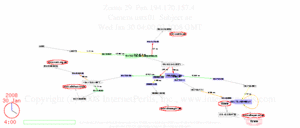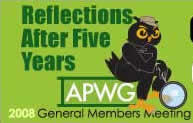 Donn Lee
talked about
LISP Deployment at Facebook.
No, not that LISP.
This one:
Donn Lee
talked about
LISP Deployment at Facebook.
No, not that LISP.
This one:
In the current Internet routing and addressing architecture, the IP address is used as a single namespace that simultaneously expresses two functions about a device: its identity and how it is attached to the network. One very visible and detrimental result of this single namespace is manifested in the rapid growth of the Internet’s DFZ (default-free zone) as a consequence of multi-homing, traffic engineering (TE), non-aggregatable address allocations, and business events such as mergers and acquisitions.So Lee used that to load-balance facebook, which you can try out here:LISP changes this by separating IP addresses into two new namespaces: Endpoint Idenfitiers (EIDs), which are assigned to end-hosts, and Routing Locators (RLOCs), which are assigned to devices (primarily routers) that make up the global routing system.
http://www.lisp4.facebook.com/.
If I understood him, he said his group of network engineers did all this without needing to involve software development, because facebook is still “a small, scrappy company” that permits and encourages such things.
-jsq





